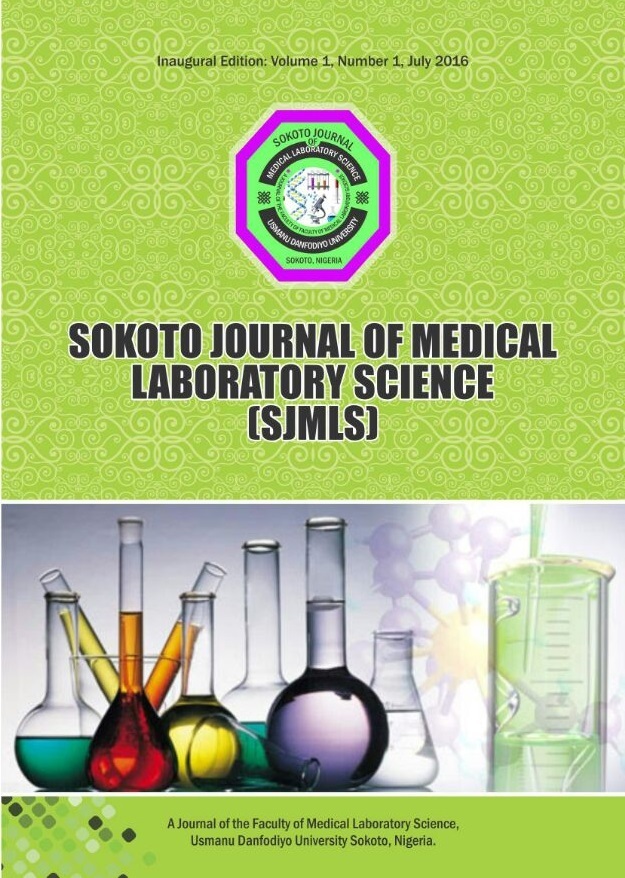Relationship between Antioxidants, Lipids and Microalbuminuria in Patients with Diabetic Mellitus in Rural Community in Jigawa State, North Western Nigeria.
Keywords:
Antioxidants, Microalbuminuria, Type 2 diabetes, chronic kidney disease, Albumin Creatinine RatioAbstract
Diabetes mellitus (DM) is a disorder characterized by chronic hyperglycemia as result of disturbances in metabolism of carbohydrate, protein and fat due to absolute or relative deficiency of insulin. The study examined the relationship between antioxidants, lipid, oxidative stress and microalbuminuria in diabetic patients in rural community. A total of 230 of which 130 (62 female and 68 males) being diabetic patients attending clinic in the state were recruited in this study for the period of one year. The remaining 100 people served as control. Both patients and controls were assessed for some clinical and biochemical parameters including ACR (albumin creatinine ratio) was measured using immunoturbidimetric method. Lipid profile, UCr and SCr (urinary and serum creatinine), MDA
(malondialdehyde) and FBG (fasting blood glucose), glycated haemoglobin was analyzed colorimetrically. SOD (superoxide dismutase), GSH (reduced glutathione) and GST (glutathione-s- transferase) were assessed using ELISA technique. The following variables were significantly higher in patients with microalbuminuria than in those without microalbuminuria (mean ± SD): fasting plasma glucose 9.44±2.15 vs 11.20±2.18 mmol/l, p=0.001; GHbA1c 9.33±1.35 vs 10.16± 1.29%, p=0.009; MDA 12.43±2.08 vs 14.82±2.61 mmol/l, p= 0.000; SOD 3.73±0.55 vs 3.26±0.44 ng/ml, p= 0.000; GSH 31.77±3.22 vs 29.58±4.35 ng/L; GST 34.08 vs 28.61 ng/ml, p=0.005±4.00; and TC 3.05±0.44 vs 3.44±0.51, p=0.000; HDL-c 1.30±0.32 vs 1.16±0.27, p=0.042; TG 1.10±0.31 vs 1.31±0.60 p=0.015; LDL-c 1.57±0.33 vs 1.80±0.41, p=0.010; SCr 87.46±14.96 vs 97.31±19.15, p=0.006; and UCr 8857.29±4229.79 vs 11726.88±2881.08, p=0.002. Patients with microalbuminuria shows a significant linear relationship between ACR, a dependant variable, and HbA1c β=0.227, p<0.005; MDA β=0.205, p<0.005 and HDL-c β= -0.688, p<0.026. Similarly, the antioxidant variables also correlate with ACR as SOD β=−0.185, p<0.021; GSH β=−0.167, p<0.046 and GST β=0.012, p<0.870. Conclusion can therefore be drawn suggesting that microalbuminuria in type 2 diabetic patients might be promoted by an insufficient counteracting effect of the antioxidant system while the oxidative process is actively on increase.




